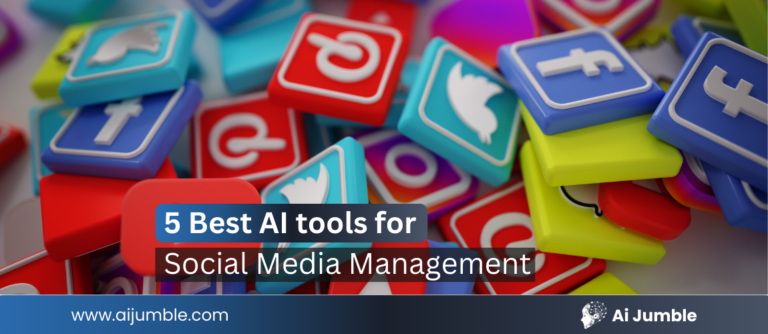Climate change remains one of the greatest challenges of our time. The evidence of rising temperatures, extreme weather events, and melting ice caps is undeniable. It is a clear indication that urgent action is required to prevent further damage. Addressing this crisis demands innovative solutions, and artificial intelligence (AI) is emerging as a powerful ally in the fight against climate change.
AI’s ability to analyze vast datasets, predict outcomes, and optimize complex systems in real time is transforming how we tackle environmental issues. From tracking deforestation to improving renewable energy systems, the role of AI in climate action is as diverse as it is impactful.
This blog will explore the remarkable ways AI is helping combat climate change, its advantages, the challenges we must face, and how responsible development can ensure a sustainable future.
Understanding Artificial Intelligence
Artificial Intelligence (AI) is a concept that has gained significant attention in recent years. Simply put, AI refers to the development of computer systems that can perform tasks that typically require human intelligence. These systems can analyze and interpret complex data, make decisions, and learn from past experiences. But what does this mean for addressing the climate crisis?
How AI Is Currently Used in Climate Action?
In the context of sustainability, AI has the potential to revolutionize our approach. By utilizing AI technologies, we can gather and analyze vast amounts of environmental data, enabling us to make more informed decisions. AI can help us identify patterns and trends, model future scenarios, and develop more accurate predictions about the impact of climate change. Additionally, AI can aid in optimizing resource allocation, energy efficiency, and reducing waste.
AI is already making significant contributions to curbing climate change. Across various sectors, these applications showcase how technology can play a key role in sustainability.
1. Predicting Weather Patterns and Extreme Events
AI systems improve the accuracy of weather forecasts by processing complex meteorological data faster than traditional methods. For instance, AI-powered models can predict extreme weather events such as hurricanes, floods, and droughts, giving governments and communities the time they need to act. A United Nations-backed project in Africa uses AI to forecast climate risks, enabling better disaster preparedness in vulnerable regions.
2. Enhancing Agriculture and Reducing Environmental Impact
Agriculture accounts for a significant share of global greenhouse gas emissions, but AI is helping create sustainable farming practices. By analyzing soil conditions, weather patterns, and crop health, AI can optimize irrigation and fertilization, reducing water use and emissions. For example, precision agriculture, powered by AI, supports farmers with real-time, data-driven decisions to maximize yield with minimal environmental harm.
3. Increasing Efficiency in Waste Management
Improving waste management is another area where AI shines. Methane emissions from waste account for 16% of global greenhouse gas emissions, but AI solutions like those from Greyparrot are making recycling more effective. Such AI systems analyze waste processes to identify recoverable materials, preventing them from ending up in landfills.
4. Tracking Environmental Changes
AI’s ability to analyze satellite imagery at scale is pivotal in monitoring environmental transformations. AI systems map deforestation, observe melting glaciers, and track land-use changes with unprecedented precision. For example, Space Intelligence uses AI to map forests and measure carbon storage, empowering conservation efforts worldwide.
The Advantages of AI in Climate Action
The application of AI in addressing climate challenges offers various benefits that traditional solutions often can’t match.
-
Processing Complex Climate Data:
Climate change involves analyzing massive and intricate datasets. AI excels in processing these datasets, enabling faster and more detailed climate models. This, in turn, improves our understanding of Earth’s complex systems and informs more effective policy decisions. -
Driving the Transition to Carbon-Neutral Economies
AI is a crucial driver in the move toward a carbon-neutral future. By optimizing renewable energy grids, monitoring industrial emissions, and guiding infrastructure upgrades, AI makes sustainable practices more accessible and efficient. For example, AI-powered smart grids improve renewable energy integration by accurately predicting energy demand and supply. -
Making Better Environmental Predictions
AI provides greater accuracy in forecasting environmental and climatic changes. From rising sea levels to localized heat islands in urban centers, AI simulations help decision-makers anticipate challenges and act proactively to mitigate them.
The Challenges and Risks of AI in Climate Action
While AI holds immense potential, leveraging it responsibly requires addressing certain challenges and risks.
High Energy Demands and Carbon Footprint
Training AI models, especially large language models, requires significant computational resources. The carbon emissions associated with AI training and deployment can offset some of its climate benefits. OpenAI’s GPT-3, for example, generated around 500 tons of carbon dioxide during its training. Innovating energy-efficient AI systems is essential to mitigating such unintended side effects.
Over-Reliance on AI
While AI provides valuable insights, relying solely on it can be risky. Algorithms are only as good as the data they’re trained on, and biases or inaccuracies in input data may lead to flawed recommendations. Human oversight is crucial to ensure AI systems align with sustainability goals.
Potential Misuse of AI
AI’s capabilities can also be misused, exacerbating environmental harm. For instance, AI tools are sometimes employed in fossil fuel extraction to enhance production efficiency. Such applications run counter to climate goals, increasing carbon emissions and delaying the transition to renewable energy.
Building a Sustainable Future with AI
The dual role of AI in potentially supporting and hindering sustainability highlights the need for ethical governance in its use. Policymakers, scientists, and businesses must collaborate to establish comprehensive guidelines for AI in climate action.
Key steps for ensuring the responsible use of AI include:
- Prioritizing Energy Efficiency: Developing energy-efficient AI systems to reduce emissions during training and operation.
- Fostering Transparency: Encouraging AI developers to share data on energy usage and climate impacts openly.
- Ensuring Ethical Use: Creating frameworks to prevent the use of AI in industries or activities that directly harm the environment.
- Combining Technology with Human Insight: Using AI to complement, not replace, human expertise in tackling climate challenges.
Conclusion: A Call for Responsible AI Development
AI has already proven itself to be an invaluable ally in combating climate change, but its potential will only be fully realized through careful development and deployment. Encouraging innovation while mitigating risks is key to leveraging AI’s power for a sustainable future.
By integrating AI thoughtfully into climate action strategies, we can drive meaningful change, supporting both planet and people.
Interested in how AI is reshaping climate action? Share your thoughts below and keep exploring ways technology can build a better, more sustainable world.
Sources
- Explainer: How AI helps combat climate change: https://news.un.org/en/story/2023/11/1143187 (UN News) – Great overview of AI applications in both mitigation and adaptation.
- AI Is Essential for Solving the Climate Crisis: https://www.bcg.com/publications/2022/how-ai-can-help-climate-change (Boston Consulting Group) – Highlights the crucial role of AI in all aspects of climate action.
- How To Fight Climate Change Using AI: https://www.forbes.com/sites/markminevich/2022/07/08/how-to-fight-climate-change-using-ai/ (Forbes) – Explores specific ways AI can be used to reduce emissions and improve efficiency.
Stay Updated on the Latest in AI
New AI tools are launching every day — we make sure you’re the first to know. Join a growing community exploring 5,000+ AI tools, with new ones added daily.







